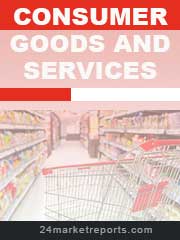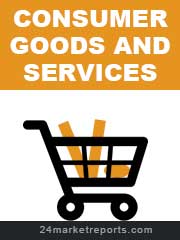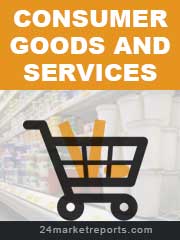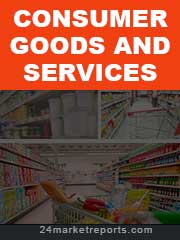
COMPANIES COVERED
S.C. JohnsonDownload FREE Report Sample
Download Free sampleHygienic insecticides are chemical or biological agents designed to control vector-borne pests and insects that pose a threat to public health. These products are used in residential, commercial, and public settings to prevent insect-borne diseases and maintain hygienic environments.
Market Size
The global Hygienic Insecticide market size was valued at USD 4,541 million in 2024 and is projected to reach USD 6,519.41 million by 2032, growing at a CAGR of 4.10%.
The North American market is estimated at USD 1,267.88 million in 2024 and is expected to grow at a CAGR of 3.51% from 2025 to 2032.
Market expansion is driven by rising awareness regarding hygiene, increasing vector-borne diseases, and advancements in insecticide formulations.
Market Dynamics
To know more about market statistics, Download a FREE Sample copy
Drivers
Rising Public Health Concerns: Increased awareness of diseases such as malaria, dengue, and Zika virus is driving the demand for hygienic insecticides.
Government Regulations and Initiatives: Various governments are implementing policies to curb vector-borne diseases, thereby promoting the use of insecticides.
Technological Innovations: Development of eco-friendly, biodegradable, and non-toxic insecticides is gaining traction.
Expanding Urbanization: The rise in urban population has led to an increased need for pest control in residential and public areas.
Restraints
Stringent Regulations: Regulatory frameworks around insecticide use and approvals can hinder market growth.
Health and Environmental Concerns: Concerns regarding toxicity and environmental impact of chemical insecticides pose challenges.
High Cost of Advanced Insecticides: Advanced and eco-friendly formulations can be expensive, limiting their adoption in developing regions.
Opportunities
Growing Demand for Organic Products: Consumer preference for non-toxic and plant-based insecticides is increasing.
Emerging Markets: Expansion in Asia-Pacific and South America presents lucrative growth prospects.
Integration of Smart Technology: The development of automated insecticide dispensing systems is a key trend.
Challenges
Counterfeit Products: The market is facing a rise in counterfeit and substandard insecticides.
Resistance in Insects: Overuse of certain insecticides has led to resistance in targeted insect populations.
Regional Analysis
North America
The market is driven by government regulations and consumer awareness about hygiene.
The U.S. dominates due to extensive use of insecticides in urban settings.
Europe
Increasing concerns about vector-borne diseases are fueling market demand.
Stringent regulations on chemical insecticides encourage innovations in bio-based solutions.
Asia-Pacific
The fastest-growing market, driven by rising urbanization and a humid climate fostering insect proliferation.
Countries like China, India, and Japan are major contributors.
South America
Brazil and Argentina are leading due to high incidences of insect-borne diseases.
Government initiatives promote insecticide usage.
Middle East & Africa
Rising cases of malaria and dengue are increasing demand for hygienic insecticides.
Limited infrastructure challenges market penetration.
Competitor Analysis
Key Companies
S.C. Johnson
Spectrum Brands
3M
Avon Products
Omega Pharma
Reckitt Benckiser Group
Sawyer Products
Tender
Insect Shield
ExOfficio LLC
Coleman
All Terrain
HOMS
Jahwa
Longrich Bioscience
Bayer AG
Sumitomo Chemical
Topsen Biotech
Kangmei Chemical
Chifeng Agricultural Chemicals
Aestar
Yangnong Chemical
Youth Chemical
Liwei Chemical
Market Segmentation (by Type)
Powder
Smoke Agent
Aerosol
Emulsifier
Others
Market Segmentation (by Application)
Business Occasions
Residential Housing
Public Area
Others
Geographic Segmentation
North America: USA, Canada, Mexico
Europe: Germany, UK, France, Russia, Italy, Rest of Europe
Asia-Pacific: China, Japan, South Korea, India, Southeast Asia, Rest of Asia-Pacific
South America: Brazil, Argentina, Colombia, Rest of South America
Middle East & Africa: Saudi Arabia, UAE, Egypt, Nigeria, South Africa, Rest of MEA
FAQ Section
What is the current market size of the Hygienic Insecticide Market?
Which are the key companies operating in the Hygienic Insecticide Market?
What are the key growth drivers in the Hygienic Insecticide Market?
Which regions dominate the Hygienic Insecticide Market?
What are the emerging trends in the Hygienic Insecticide Market?
Key Benefits of This Market Research:
Industry drivers, restraints, and opportunities covered in the study
Neutral perspective on the market performance
Recent industry trends and developments
Competitive landscape & strategies of key players
Potential & niche segments and regions exhibiting promising growth covered
Historical, current, and projected market size, in terms of value
In-depth analysis of the Hygienic Insecticide Market
Overview of the regional outlook of the Hygienic Insecticide Market:
FAQs on the Global Hygienic Insecticide Market (2024-2032)
1. What is the current market size of the global Hygienic Insecticide industry?
As of 2024, the global Hygienic Insecticide market is valued at approximately USD 4,541 million.
2. What is the projected market size by 2032?
The market is expected to reach USD 6,519.41 million by 2032, growing at a CAGR of 4.10% during the forecast period.
3. What factors are driving the growth of the Hygienic Insecticide market?
Key growth drivers include:
Rising awareness of hygiene and pest control
Increased urbanization and population growth
Expansion of residential and commercial applications
Innovations in eco-friendly insecticide formulations
4. What challenges does the Hygienic Insecticide market face?
Some major challenges include:
Strict environmental regulations on chemical insecticides
Growing demand for organic and non-toxic alternatives
Rising resistance of insects to traditional insecticides
5. Which regions are leading the Hygienic Insecticide market growth?
North America, Europe, and Asia-Pacific are the dominant markets, with Asia-Pacific experiencing the fastest growth due to increasing demand in urban and industrial settings.
Key Reasons to Buy this Report:
Access to date statistics compiled by our researchers. These provide you with historical and forecast data, which is analyzed to tell you why your market is set to change
This enables you to anticipate market changes to remain ahead of your competitors
You will be able to copy data from the Excel spreadsheet straight into your marketing plans, business presentations, or other strategic documents
The concise analysis, clear graph, and table format will enable you to pinpoint the information you require quickly
Provision of market value data for each segment and sub-segment
Indicates the region and segment that is expected to witness the fastest growth as well as to dominate the market
Analysis by geography highlighting the consumption of the product/service in the region as well as indicating the factors that are affecting the market within each region
Competitive landscape which incorporates the market ranking of the major players, along with new service/product launches, partnerships, business expansions, and acquisitions in the past five years of companies profiled
Extensive company profiles comprising of company overview, company insights, product benchmarking, and SWOT analysis for the major market players
The current as well as the future market outlook of the industry concerning recent developments which involve growth opportunities and drivers as well as challenges and restraints of both emerging as well as developed regions
Includes in-depth analysis of the market from various perspectives through Porters five forces analysis
Provides insight into the market through Value Chain
Market dynamics scenario, along with growth opportunities of the market in the years to come
6-month post-sales analyst support
Customization of the Report
In case of any queries or customization requirements, please connect with our sales team, who will ensure that your requirements are met.
Chapter Outline
Chapter 1 mainly introduces the statistical scope of the report, market division standards, and market research methods.
Chapter 2 is an executive summary of different market segments (by region, product type, application, etc), including the market size of each market segment, future development potential, and so on. It offers a high-level view of the current state of the Hygienic Insecticide Market and its likely evolution in the short to mid-term, and long term.
Chapter 3 makes a detailed analysis of the market's competitive landscape of the market and provides the market share, capacity, output, price, latest development plan, merger, and acquisition information of the main manufacturers in the market.
Chapter 4 is the analysis of the whole market industrial chain, including the upstream and downstream of the industry, as well as Porter's five forces analysis.
Chapter 5 introduces the latest developments of the market, the driving factors and restrictive factors of the market, the challenges and risks faced by manufacturers in the industry, and the analysis of relevant policies in the industry.
Chapter 6 provides the analysis of various market segments according to product types, covering the market size and development potential of each market segment, to help readers find the blue ocean market in different market segments.
Chapter 7 provides the analysis of various market segments according to application, covering the market size and development potential of each market segment, to help readers find the blue ocean market in different downstream markets.
Chapter 8 provides a quantitative analysis of the market size and development potential of each region from the consumer side and its main countries and introduces the market development, future development prospects, market space, and capacity of each country in the world.
Chapter 9 shares the main producing countries of Hygienic Insecticide, their output value, profit level, regional supply, production capacity layout, etc. from the supply side.
Chapter 10 introduces the basic situation of the main companies in the market in detail, including product sales revenue, sales volume, price, gross profit margin, market share, product introduction, recent development, etc.
Chapter 11 provides a quantitative analysis of the market size and development potential of each region during the forecast period.
Chapter 12 provides a quantitative analysis of the market size and development potential of each market segment during the forecast period.
Chapter 13 is the main points and conclusions of the report.

Speak to our Custom Research Team and get the Custom Research in a budget
Custom ResearchFrequently Asked Questions ?
A license granted to one user. Rules or conditions might be applied for e.g. the use of electric files (PDFs) or printings, depending on product.
A license granted to multiple users.
A license granted to a single business site/establishment.
A license granted to all employees within organisation access to the product.
Upto Working 24 to 48 hrs
Upto 72 hrs max - Weekends and Public Holidays
Online Payments with PayPal and CCavenue
Wire Transfer/Bank Transfer
Hard Copy




 Industry Market Size
Industry Market Size SWOT Analysis
SWOT Analysis Industry Major Players
Industry Major Players Revenue Forecasts
Revenue Forecasts Historical and Forecast Growth
Historical and Forecast Growth Profitability Analysis
Profitability Analysis
























